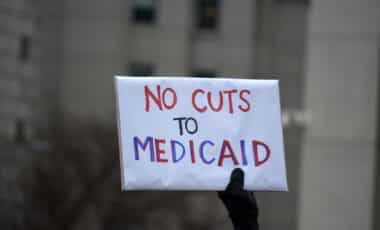Dozens of businesses across the United States, from small grocery stores to hair salons and day care centres, shut their doors on Monday in a loosely organised protest against former President Donald Trump’s immigration policies. While the movement aimed to highlight the contributions of immigrant workers, participation was hampered by economic constraints and widespread fear within migrant communities.
The event, reminiscent of previous “Day Without Immigrants” protests, saw mixed support as business owners weighed financial losses against political solidarity. While some establishments closed entirely, others remained open with limited staff. Many workers, particularly in lower-income brackets, found themselves unable to forgo a day’s wages amid economic uncertainty.
A Divided Response From Businesses and Workers
The protest, which followed a weekend of demonstrations in California and other states, saw varying levels of participation. In cities such as Chicago, small businesses in predominantly Latino neighbourhoods closed, yet major employers and industries such as construction continued operations as usual. Jaime di Paulo, president of the Illinois Hispanic Chamber of Commerce, acknowledged the symbolic importance of the protest but expressed concerns about its impact.
“This is only hurting our own community,” di Paulo stated, reflecting a broader sentiment among business owners and employees reluctant to take financial risks.
Among those who did take part was Andrea Toro, who closed her hair salon in Chicago’s Pilsen neighbourhood. She cited fears within the local immigrant community, noting that teachers had observed increased school absences since Trump’s policies came into effect. “If we don’t have immigrants, we don’t have anything work around here,” she said. “If we’re mute, we’re in silence, then they’re going to do whatever they want.”
Not all businesses opted to close fully. El Burrito Mercado, a well-established grocery store and restaurant in St Paul, Minnesota, which previously shut down entirely during a similar protest in 2017, remained open for limited hours with a skeleton staff. Co-owner Milissa Silva highlighted concerns among employees over lost income and community members needing access to essential goods.
Fear and Solidarity Shape Participation
The protest took place amid heightened anxiety in immigrant communities, fuelled by both misinformation and official enforcement actions. Reports of raids, some unfounded, have contributed to a climate of fear, discouraging some from engaging in activism.
School districts in cities such as Chicago and San Diego noted that some families chose to keep their children at home in solidarity with the protest. In Minnesota, Spanish-immersion day care provider Tierra Encantada remained open, yet approximately 70% of enrolled children were absent as families supported the mostly immigrant workforce.
Utah saw closures among Latino-owned businesses, with State Senate Minority Leader Luz Escamilla describing the movement as an act of compassion rather than solely a political statement. However, Utah Senate President Stuart Adams, a Republican, defended Trump’s policies, asserting that immigration enforcement was targeting individuals with criminal records rather than law-abiding workers.
Although Biden administration policies differ from those of Trump, enforcement measures continue to generate uncertainty. The protest highlighted the difficult balance between economic survival and political expression, leaving many workers caught between the two.









